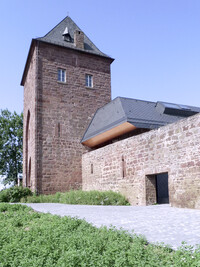
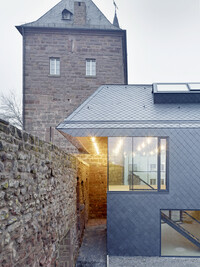
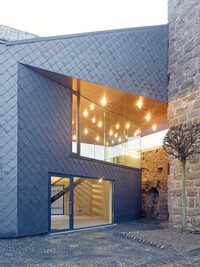
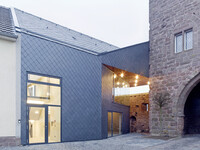
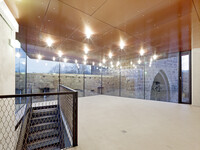
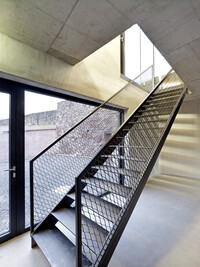
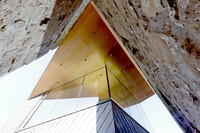
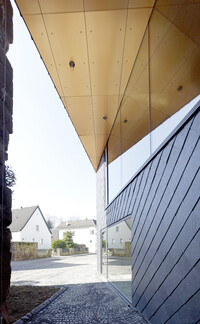
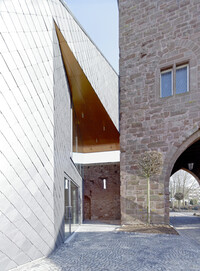
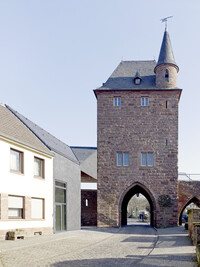
1plus1equals1 - Extension Zülpicher Gate
The town gate Zülpicher Tor is one of the most remarkable ancient buildings in Nideggen, a tourist city in the Eifel Range, south of Cologne. The expansion of the gate provides an access keeping up with the times, and therefore makes its touristic use possible. The architecture of the expansion deals with the complex relationship based on independence and dependence of the two structures. Jointing and linking up of Old and New derive from the specific needs of access, visual contact and town planning premises. Whereas the outside observer perceives the town wall as the base of the new construction, which is in the background of the old construction, the observer inside the building sees an inverted image. The expansion looses itself with self-assurance, the roof largely overhangs and hovers over the town wall like a structure of its own. In the accessible space in between, a passage to a new park created outside the town wall, the atmospheric tension between the new building and the historic ensemble gains in density. The observer has to be in the jointing to understand the whole building with its overhanging structure and its unusual views through and connections within it. Whereas in the jointing the emphasis is laid on the independence of the structures, the room boundaries vanish inside. In the panoramic room, the boundaries get blurred. Through frameless glazing, the room extends over its real boundaries and includes the room in between. The visual boundaries of the upper floor are formed by the town wall and the tower. The visual effect is underlined by the overhanging copper roof. The warm shades of the roof echoes the red tone of the local sandstone and becomes the distinctive mark of the building. In the self-supporting and open upper floor, the modern horizontal ceiling and the historic vertical surfaces combine to create a new common room.